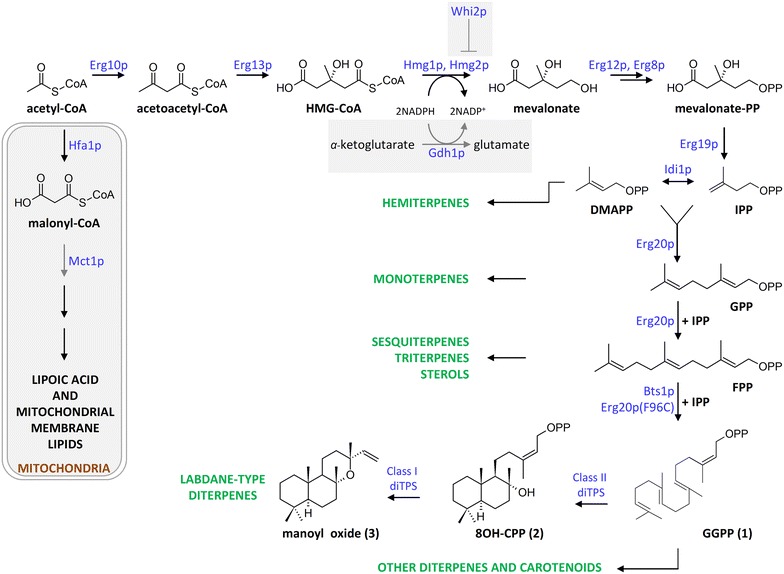Fig. 1.

Schematic representation of isoprenoid biosynthesis via the mevalonic acid pathway. The mevalonate pathway provides the substrates for the different terpene classes [dimethylallyl diphosphate (DMAPP) for hemiterpenes (C5), geranyl diphosphate (GPP) for monoterpenes (C10), farnesyl diphosphate (FPP) for sterols, sesquiterpenes (C15) and triterpenes (C30), geranylgeranyl diphosphate (GGPP) for diterpenes (C20) and carotenoids (C40)]. Labdane-type diterpene biosynthesis from GGPP, via 8OH-CPP, is described using manoyl oxide as the example. Whi2p, previously identified as positive genetic interactor of HMG2 [38], and pathways competing for substrates involved in terpene biosynthesis, such as the mitochondrial fatty acid biosynthesis pathway or glutamate biosynthesis, are also indicated. Enzyme names correspond to the S. cerevisiae proteins. Steps downregulated in this study by heterozygous deletion of the corresponding gene are indicated by gray arrows
